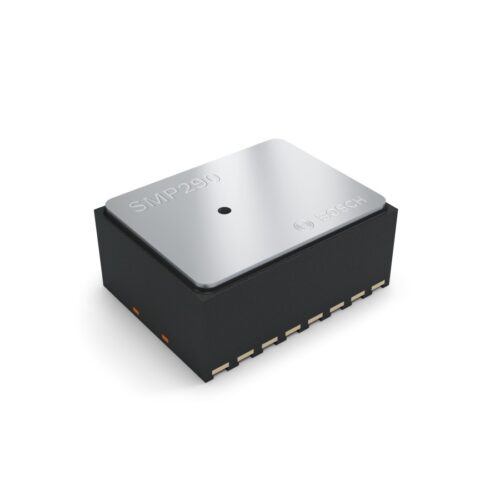The tire sensor uses Bluetooth to check pressure, save battery, update wirelessly, and work with other systems—making vehicles safe and easy to build.

Bosch has launched the SMP290, a compact tire pressure sensor that is the first fully integrated TPMS (Tire Pressure Monitoring System) solution with Bluetooth Low Energy (BLE) on the market. Designed for use in all types of vehicles—from motorcycles to buses—it offers easy pressure monitoring via smartphone and up to ten years of battery life.
The SMP290 combines a microcontroller, BLE interface, pressure and temperature sensors, and a 2-axis acceleration sensor into a single MEMS (micro-electromechanical system) unit. This high level of integration reduces space, wiring, and power needs, supporting both compact design and long-term efficiency.
“The Bluetooth functionality not only improves efficiency but also safety throughout the entire lifetime of the sensor,” explains Peter Wolfangel, member of the board of management of Bosch Mobility Electronics and responsible for development.
Two-way Bluetooth communication enables software updates over the air, so the sensor can stay current without physical access. This improves safety and functionality throughout the sensor’s life.
Vehicle manufacturers can integrate it with other Bluetooth-based systems like keyless entry, reducing component count and simplifying design. System integrators benefit from easier installation, while drivers get real-time tire data without additional hardware.
Tire pressure monitoring helps improve road safety, fuel economy, and tire life. In many regions—including the U.S., China, and Europe—TPMS is legally required in passenger vehicles, making innovations like the SMP290 critical for compliance and performance.
Peter Wolfangel explains: “The SMP290 is designed as an integrated system and can therefore make optimum use of synergies within a vehicle’s hardware and software.” The sensor can share communication modules with other components, such as keyless access systems, thereby preventing redundancies and complicated cabling. “This contributes to a more efficient and leaner design that benefits the vehicle throughout its entire life cycle,” says Wolfangel.










